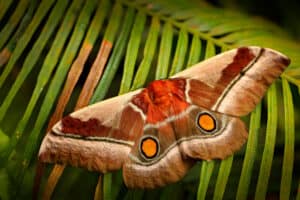They’re elusive and delicate and may have you wondering what kind of mystical message they arrive to deliver. Discover the meaning and symbolism of white moth sightings!

Types of White Moths
1. Snowy Urola Moth
Scientific name: Urola nivaris
This moth belongs to the family Crambidae, which has 850 species. It has silky white wings with metallic gold fringed forewings. When resting, it folds its wings over its body. These moths have a small dark spot in the middle of their back, and they gravitate to light at night. You can find snowy urola moths in the southern regions of Canada and Maine down to the south of Florida, and west to Illinois and Texas.
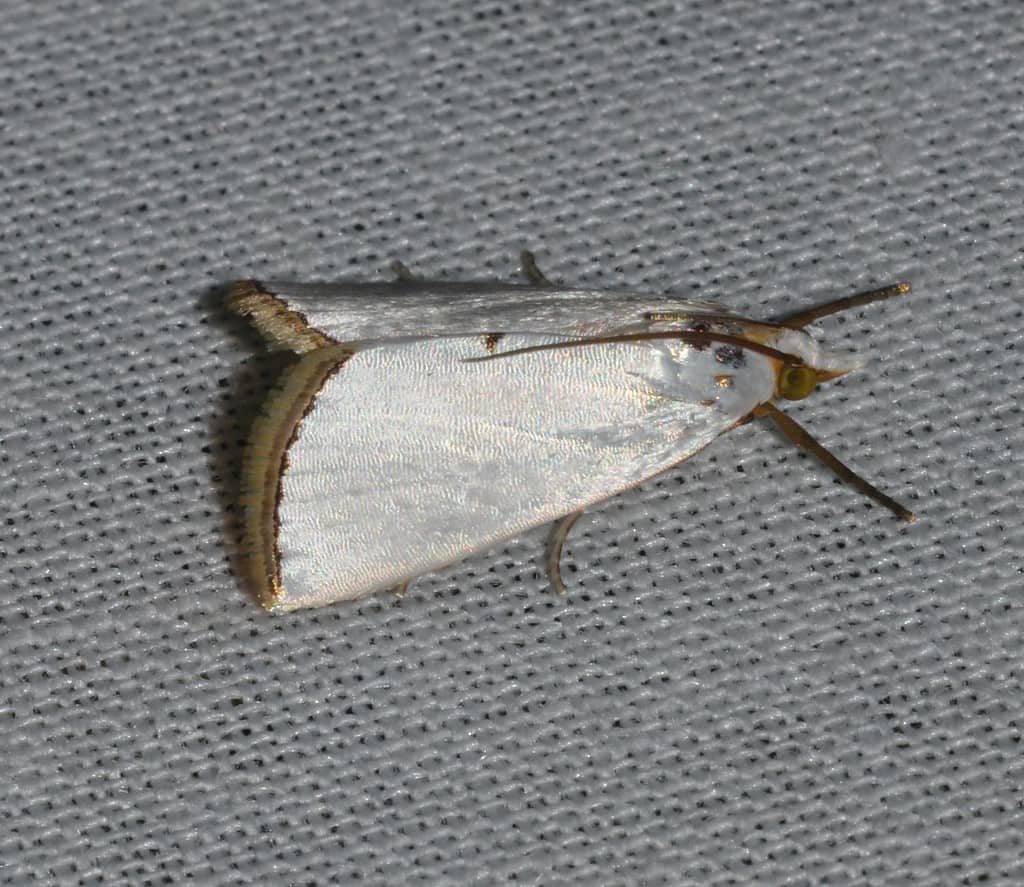
The snowy urola moth has silky white wings with metallic gold fringed forewings.
©Andy Reago & Chrissy McClarren / Flickr – Original / License
2. Virginia Tiger Moth
Scientific name: Spilosoma virginica
This particular species belongs to the subfamily Arctiinae. The wings of Virginia tiger moths are mostly white with patterns. The hindwings have black spots and have orange markings. Their bodies have lots of soft hairs. Their appearance is kind of fuzzy. During the larval stage, these moths are pests, especially when it comes to gardens and crops. As adults, however, they have a role to play in the ecosystem as pollinators. An interesting fact about these moths is they have a taste for items made of wool! Their habitats exist mainly in the eastern regions of the U.S.
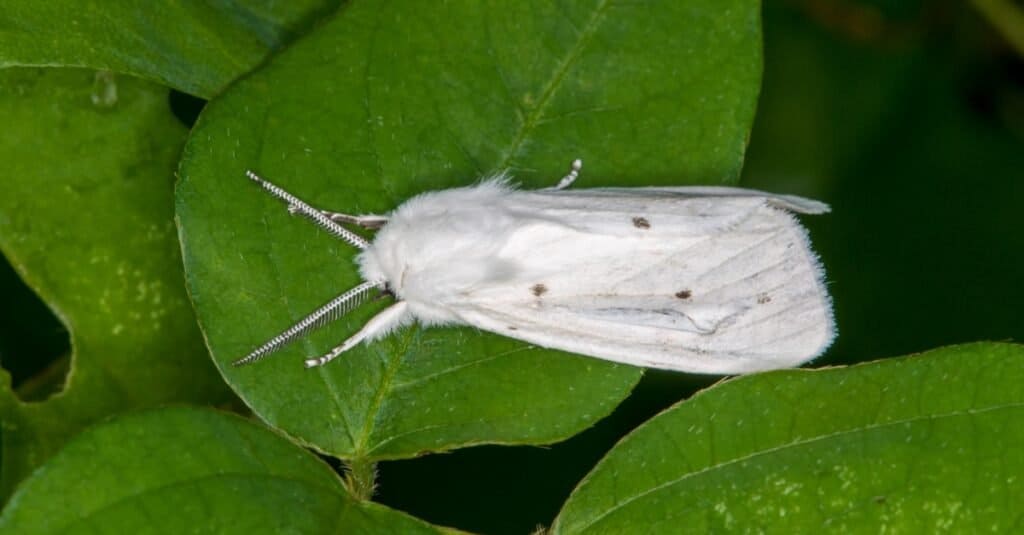
Virginian tiger moths are distinguished by their fuzzy appearance.
©Michael Siluk/Shutterstock.com
3. White Witch Moth
Scientific name: Thysania agrippina
The white witch moth is a rather large moth that belongs to the family Erebidae. Their wingspan can reach up to 11 inches, and that size qualifies them as one of the largest moths on the planet. The females are usually bigger than males, and you can find them in regions like Mexico and Central and South America. They like rainforest environments, and the higher the terrain the better for them. These moths are most active at night and their life span is short. So, they focus on reproduction. They are able to fly long distances in search of mates, and according to regional folklore, seeing one of these is a sign of good luck.

The white witch has the largest wingspan of any moth in the world.
©RealityImages/Shutterstock.com
4. White Plume Moth
Scientific name: Pterophorus pentadactyla
This is a small and delicate moth. It belongs to the family Pterophoridae, and its color is creamy or white. Its body is thin and long. You can typically find these moths near artificial lighting. They use their wings as camouflage to be able to mix in with their surroundings. As caterpillars, they are pests but when they grow they help themselves to the nectar nearby, which is helpful for pollination.
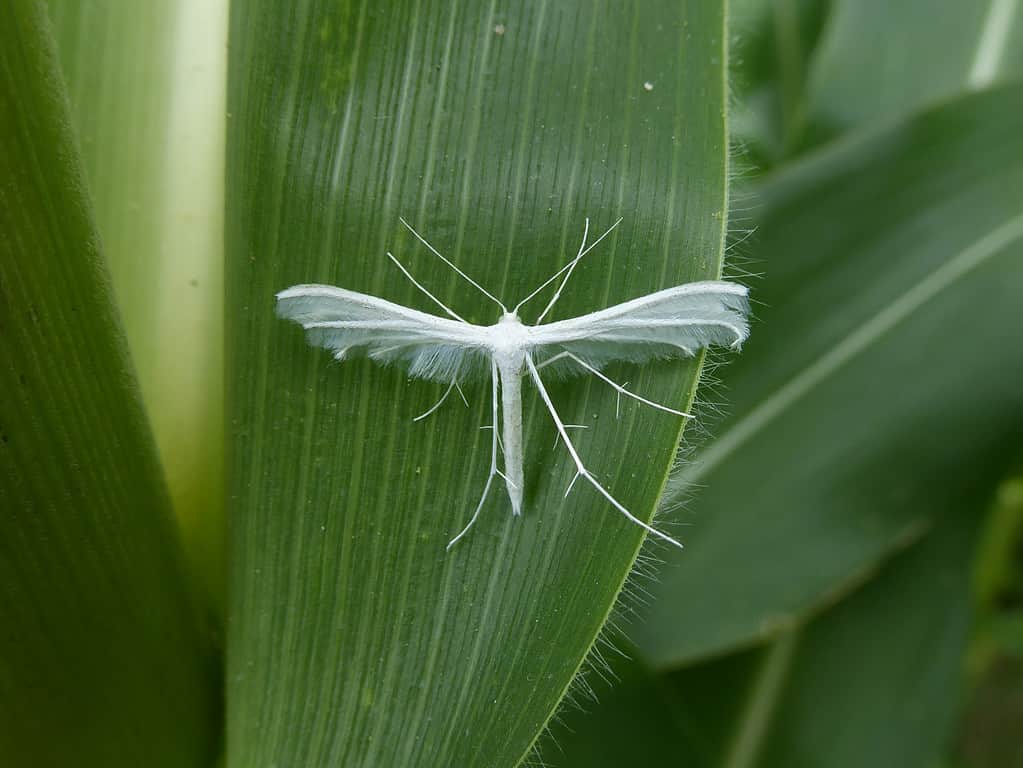
Pterophorus pentadactyla is cream or white in color and has a thin and long body.
©Syrio, CC BY-SA 4.0, via Wikimedia Commons – Original / License
5. Delicate Cycnia Moth
Scientific name: Cycnia tenera
The delicate cycnia moth belongs to the Erebidae family and is native to North America. It is mostly found in the central and eastern regions of the U.S. and in the southern part of Canada. These moths thrive in open woodlands, meadows, and along forest edges. As caterpillars, they also play a role in the ecosystem as they feed on nettle plants. They are a good food source for some insects and birds and if they make it to adulthood, they contribute to pollination and the food chain continues!
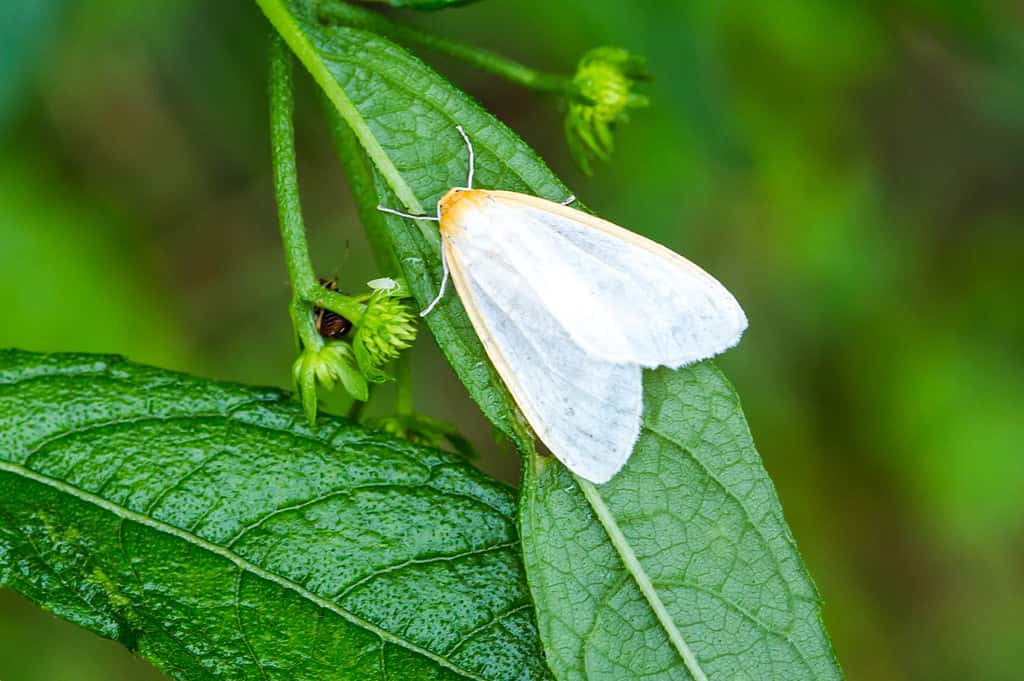
The delicate cycnia moth is native to North America and lives in open woodlands, meadows, and along forest edges.
Meaning of the Color White
The color white points to purity and innocence. There’s peaceful, untainted energy that surrounds the color white. It’s a sanitized color and is frequently a part of hospital bedding and décor. The color white is also popular in wedding ceremonies, symbolizing the innocence of an unmarried woman as she transitions into a marital union. In Eastern cultures, the meaning of the color white is a bit different. Often, white is symbolic of sadness, mourning, and even bad luck. Whereas in the Western world, white is used during joyous occasions and during religious rituals; in the Eastern world, white is worn on different occasions like funerals as it’s associated with death.
Meaning and Symbolism of White Moth Sightings
White moths are delicate and are thought to symbolize the soul of a human being. Depending on the cultural interpretation, the spiritual meaning of white moths may refer to someone who is no longer on the earthly plane. It could be a message from a loved one who has passed. White moths are connected to hope and protection, which may mean that the soul of a departed loved one has arrived to remind you that you are protected in the spiritual realm and that despite any sadness you may be experiencing, there is hope for your future.
Thank you for reading! Have some feedback for us? Contact the AZ Animals editorial team.







